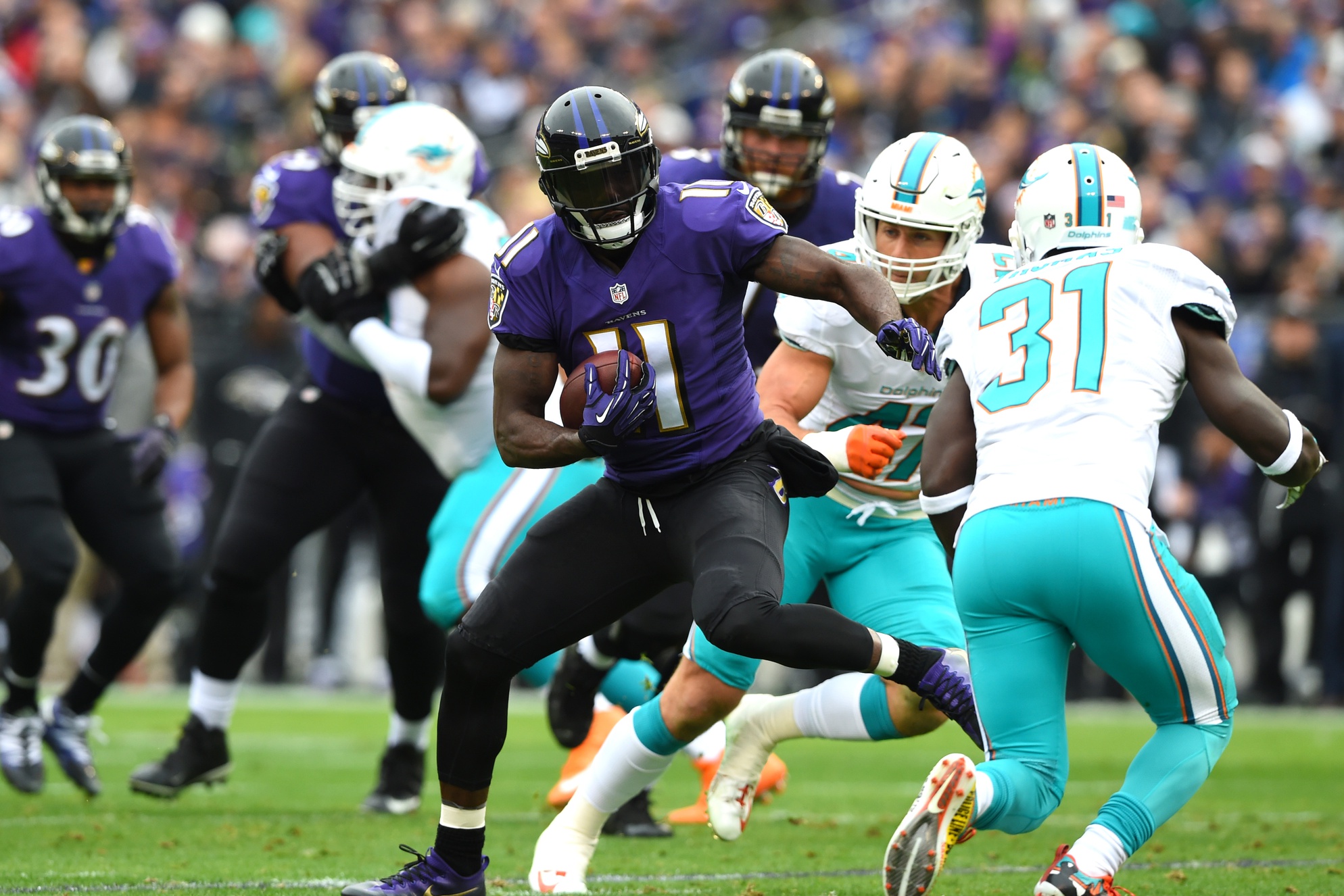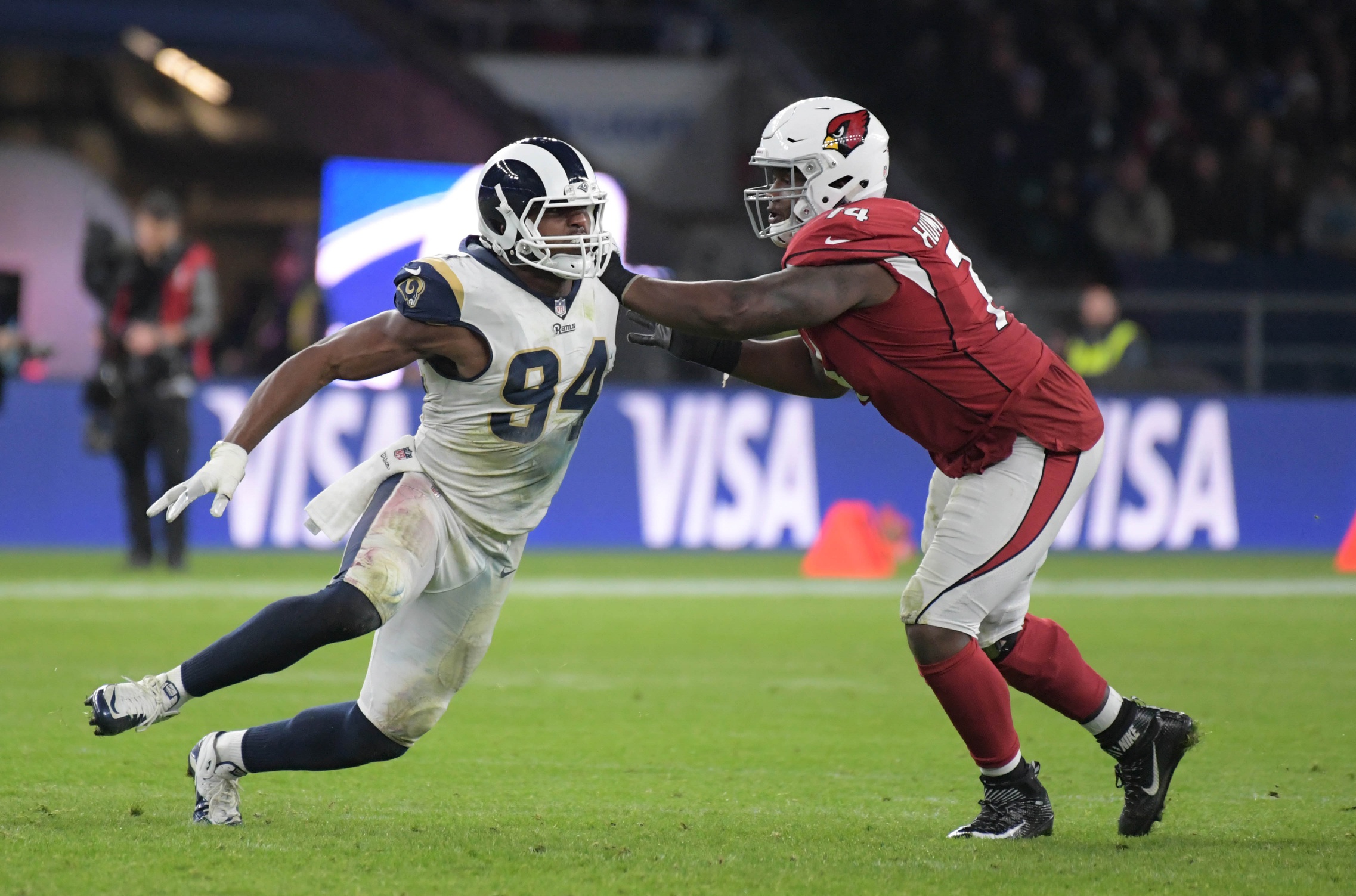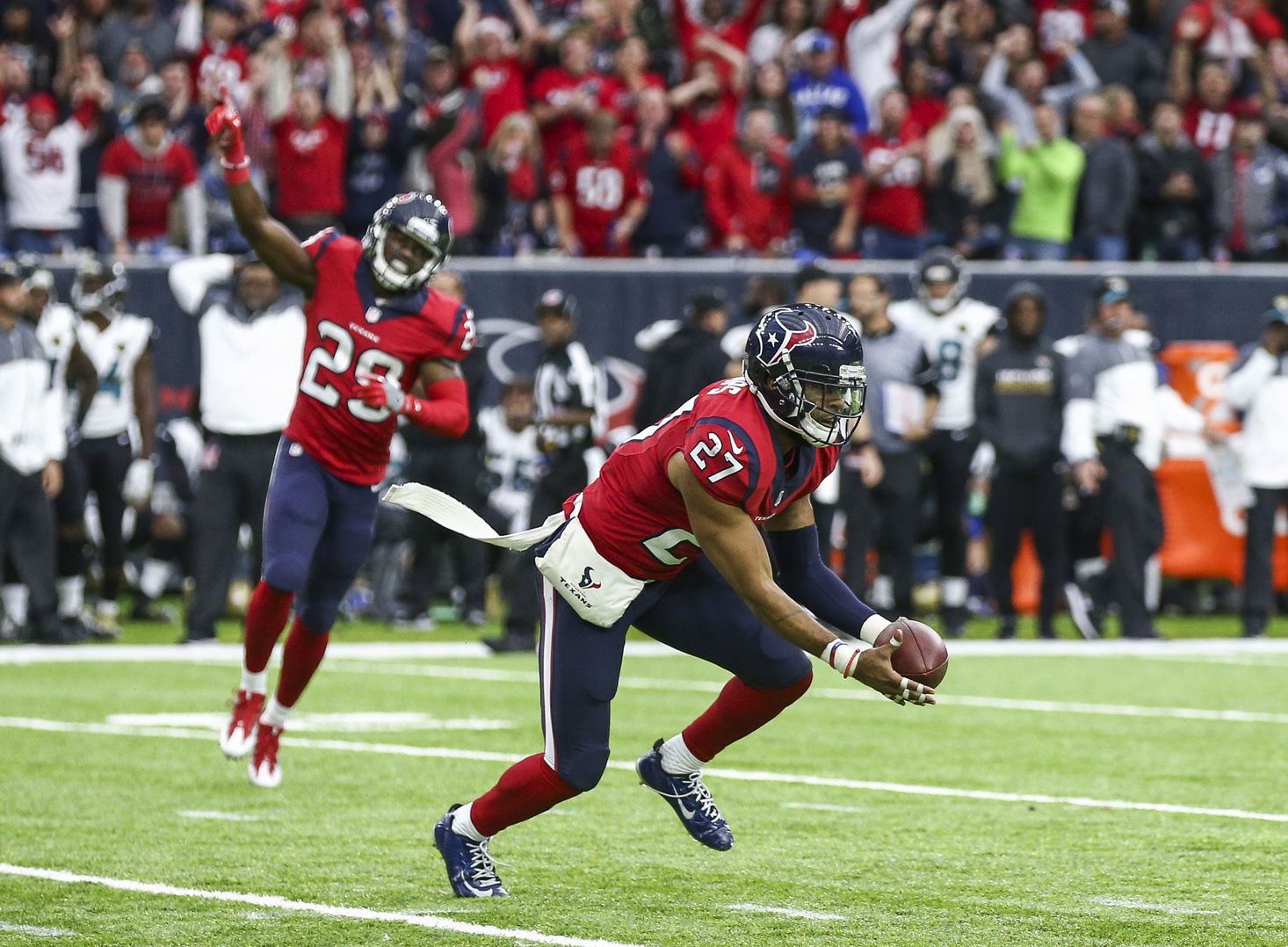It’s easy to get caught up in the results from one great season — particularly when it comes from a young player — but one season doesn’t guarantee a prolonged career of high-level play. Maintaining a lengthy NFL career is a feat in and of itself; maintaining a lengthy career of above-average play as a starter is even more difficult. One injury, or even just a change in environment, can lead to a permanent drop in production. That is the case for most of the players on this team — NFL players who flashed one season of good-to-elite play since 2006 but were unable to replicate that performance over the remainder of their careers.
[Editor’s note: Subscribe to PFF ELITE today to gain access to PFF’s Premium Stats and new Player Grades experience in addition to the 2020 NFL Draft Guide, 2020 Fantasy Rookie Scouting Report, PFF Greenline, all of PFF’s premium article content and more.]
QB: Robert Griffin III, Washington Redskins (2012)
The story of Griffin’s career can’t be told without bringing up the injuries that derailed things early. His rookie season is all that remains of what the former second overall pick’s career could have been — a year where the Redskins offense finished the season ranked fourth in expected points added per play. It’s hard to forget the dynamic threat he posed on the ground, running for over 800 yards on seven yards per attempt, but Griffin was one of the most efficient passers in the league as well. He led the NFL with 8.2 yards per attempt and finished behind only Peyton Manning, Aaron Rodgers and Tom Brady in PFF passing grade during the regular season (88.3).
Griffin would return from the torn knee ligaments to play a relatively full season in 2013, but things weren’t the same. That was the last time he played over 500 snaps in a season.
RB: Peyton Hillis, Cleveland Browns (2010)
Hillis is a unique case in that his one-year run was immortalized in the form of becoming the cover man for Madden 12. In the previous season — the 2010 campaign for Cleveland — Hillis ran for 1,181 yards (11th in NFL) while forcing 31 missed tackles on the ground (tied for 10th at the position). From a grading perspective, it wasn’t a dominant rushing performance, but Hillis did grade out as one of the best receiving running backs in the NFL with an 87.9 receiving grade on the season (second to Pierre Thomas among running backs with 100 or more routes run).
He was never able to match that output again. Hillis’ 587 rushing yards in 2011 — a year marred by injuries and contract disputes — were the most he would record in a single season for the rest of his career.
WR: Kamar Aiken, Baltimore Ravens (2015) and Terrelle Pryor Sr., Cleveland Browns (2016)
Aiken played for five teams from 2011 to 2018, but his best seasons came with the Ravens. Of those three seasons, his best year by far came in 2015 after injuries to several of Baltimore’s top pass-catchers. Serving as Joe Flacco’s top option with 121 targets, Aiken brought in 75 passes for 944 receiving yards and five touchdowns. Few players moved the chains quite like he did that year. Aiken’s 53 first down receptions were 14th at the wide receiver position. That season didn’t lead to anything, though, as he caught just 29 passes in 2016 and had little success in subsequent stops with the Indianapolis Colts and Philadelphia Eagles.

Pryor is one of the more interesting stories in the NFL over the past decade. In 2013, he got his opportunity as the starter at quarterback for the Oakland Raiders, but his 53.9 overall grade on just over 500 snaps that year put an end to his time as a signal-caller. After bouncing around a bit, Pryor landed with Cleveland, where he would go on to have a massive year as one of the team’s starting wide receivers in 2016. He caught 77 of 132 targets for over 1,000 receiving yards, earning a 79.6 receiving grade that ranked 19th among 93 wide receivers with at least 200 routes run. Injuries have limited Pryor to just under 500 receiving yards in the three seasons since 2016 — a stretch that has seen him sign with four different NFL teams.
TE: Gary Barnidge, Cleveland Browns (2015)
Just four positions deep into our list, the Browns are already at three nominees. There aren’t many players who hang around for seven seasons in the NFL and then break out the way Barnidge did in 2015. From being selected in the fifth round of the 2008 NFL Draft by the Carolina Panthers through the 2014 season, Barnidge caught 44 total passes and had just three touchdowns. In 2015 alone, he put up 79 receptions for 1,043 yards and nine touchdowns. All of those were top-five marks at the tight end position, and his 28 receptions of 15 or more yards were fewer than only Rob Gronkowski and Greg Olsen.
Barnidge would have some success the following year — though not at the same level as in 2015 — and he wouldn’t play again after being released by the Browns leading up to the 2017 season.
T: Jeremy Trueblood, Tampa Bay Buccaneers (2008) and Chris Clark, Denver Broncos (2013)
From 2006 to 2011, Trueblood played at least 400 snaps at tackle each year for the Buccaneers. He graded above 60.0 just twice and above 65.0 only once — a 2008 season where his 83.0 overall grade ranked 19th among 74 qualifying tackles. His run blocking is really what led to the bump, as his 91.4 run-blocking grade ranked sixth at the position, but Trueblood also had a career year in pass protection. His 4.2% pressure rate allowed in 2008 was nearly three percentage points lower than any other season in his tenure with Tampa Bay.
Clark began his career as an undrafted free agent with the Buccaneers in 2008 behind Trueblood, but he didn’t get his chance to start until 2013 with the Broncos — a year that turned out to be the best of his career thus far. Clark drew his first start at left tackle in Week 3 and held the job all the way through Denver’s Super Bowl loss to the Seattle Seahawks. His 82.1 PFF grade ranked 15th among 74 qualifying tackles on the year, and it came from a well-balanced effort with both run- and pass-blocking grades north of 75.0. Clark has since started in stints with the Broncos, Houston Texans and Carolina Panthers, but he has not recorded a PFF grade of 70.0 since 2013.
G: Jason Spitz, Green Bay Packers (2008) and Mackenzy Bernadeau, Dallas Cowboys (2013)
Spitz spent some time moving around the interior of the Packers’ offensive line over the first three seasons of his career. He struggled as a rookie with just a 58.0 overall grade, and though Spitz did improve in 2007, it was his third season where he truly put it together as both a pass blocker and a run blocker. Spitz started four games at center, one at left guard and the rest at right guard. And if you look at all interior offensive linemen in 2008, Spitz ranked eighth among qualifying guards and centers in overall grade (89.8). An injury in 2009 lost Spitz his starting role, and he went on to play just 42 snaps over the rest of his career.
Like Spitz, Bernadeau had several seasons as a starter between his time with both the Carolina Panthers and Cowboys, but he put together just one campaign of high-level play in a starting role. That came in 2013 — a season where Brian Waters replaced Bernadeau in Week 4. Waters would go on to miss the remainder of the season following a Week 8 injury, though, and Bernadeau responded with the best stretch of play in his career. His 81.0 overall grade ranked 15th among all guards, and he improved significantly as a pass protector (74.0 pass-blocking grade) compared to his previous two stints as a starter (54.0 in 2010 and 57.2 in 2012). Bernadeau was replaced by Zack Martin the following season and never played more than 100 snaps on offense in a season again.
C: Scott Mruczkowski, San Diego Chargers (2009)
Mruczkowski may be the best example of a true one-year wonder on this team. Drafted in 2005, Mruczkowski started more than one game in only one season — the 2009 campaign, when he started 13 games for the Chargers. His 81.9 overall grade that year ranked 10th among 33 qualifying centers, and he allowed just one quarterback hit and one sack on 463 pass-blocking snaps. Despite that showing, 2009 remained the only season in Mruczkowski’s career where he played more than 150 snaps.
DI: Ian Williams, San Francisco 49ers (2015) and Sharrif Floyd, Minnesota Vikings (2014)
Williams spent years working his way through the ranks of a talented 49ers’ defense after signing with the team as an undrafted free agent in 2011. He finally cracked the defensive rotation in 2014 with an 84.0 overall grade on 215 defensive snaps, but it was the 2015 season where he saw the largest role of his NFL career. Williams played 661 defensive snaps that season and earned an 87.5 overall grade — ninth among 126 qualifying interior defenders. He was set to sign a five-year, $27.5 million deal the following offseason, but the offer was reworked to a one-year deal following a failed physical. Williams didn’t play another NFL snap.
Like several other members of this team, an injury was ultimately Floyd’s undoing after his first-round selection by the Minnesota Vikings in 2013. He played a prominent role on the defense in each of 2013, 2014 and 2015, but his best season from a PFF grading standpoint by far came during the 2014 season. Floyd’s 84.2 overall grade was over 20 points higher than both his 2013 and 2015 marks and it ranked fifth among the interior defenders to play at least 500 defensive snaps during the 2014 season. What was supposed to be a routine knee surgery in 2016 ultimately ended his NFL career prematurely, though. Floyd filed a lawsuit against Dr. James Andrews in 2018 in relation to the surgery.
ED: Robert Quinn, St. Louis Rams (2013) and Vic Beasley Jr., Atlanta Falcons (2016)
It seems odd to include a guy here who just signed a five-year, $70 million contract this offseason, but Quinn’s 2013 season was so much better than the rest of his career that he’s still worth a mention. In fact, Quinn’s 93.6 overall grade in that 2013 season remains the highest mark from any edge defender with 500 or more defensive snaps in any season since 2006. That campaign also joins 2010 Tamba Hali, 2016 Khalil Mack and 2019 Za’Darius Smith as the only edge defender seasons to reach 90 quarterback pressures.

Over the remaining eight seasons of Quinn’s career, he hasn’t recorded more than 57 pressures in a season, and the only other year he reached an overall grade of even 70.0 on 500 or more snaps was in 2014 (73.0). It hasn’t been a bad career by any stretch, but he also hasn’t come close to living up to the promise he showed in 2013.
Beasley also cashed in on a new contract this offseason, and part of that check stems from a 2016 season where he led the NFL in sacks. Beasley’s 79.9 pass-rushing grade in 2016 indicates he probably didn’t deserve to lead the NFL in sacks, but it was a strong showing as a pass-rusher nonetheless. His career looked to be on an upward trend. The last three seasons haven’t come close to reaching those heights, though. Eighty-eight edge defenders have 500 or more pass-rushing snaps since 2017. Beasley’s pressure rate of 8.9% ranks 75th among that group. That number doesn’t match up with the guy who led the league in sacks four seasons ago.
LB: Anthony Barr, Minnesota Vikings (2015) and Kiko Alonso, Buffalo Bills (2013)
Like Robert Quinn, Barr has had some decent seasons, but there is only one year that justifies the five-year, $67.5 million contract he’s currently playing on. That was 2015 — Barr’s second season in the NFL — when he joined Luke Kuechly as the only two linebackers in the league to record an overall grade of 90.0. He was an effective pass rusher, totaling 23 pressures on just 92 pass-rushing snaps. But most importantly, he played at a high level in coverage (90.0 coverage grade). In the four years since that season, Barr hasn’t recorded a coverage grade of 60.0.
Alonso’s best season by far came as a rookie back in 2013. He earned an 80.4 overall grade with a 90.1 grade in coverage as the starting middle linebacker for the Bills. A torn ACL the following offseason and then a trade to the Philadelphia Eagles was followed by a string of disappointing play from the Oregon product, though. From 2015 to 2018, Alonso earned PFF grades of 39.3, 61.3, 49.1 and 49.6, struggling particularly in coverage his final few seasons with the Miami Dolphins. He should have another chance at turning things around and recapturing some of that rookie form with the New Orleans Saints next season.
CB: Jason Verrett, San Diego Chargers (2015) and Mike Jenkins, Dallas Cowboys (2009)
Injury after injury has derailed what looked to be a promising career for Verrett in San Diego as a first-round pick out of TCU. He showed flashes on just over 200 snaps as a rookie before a shoulder injury cut his season short. The 2015 season is the only “full” season of NFL action we have on tape for Verrett. That year, he posted a 90.9 coverage grade (tied highest among qualifying cornerbacks). Unfortunately, the 720 snaps he played that season are more than the other five seasons of his NFL career combined. At this point, it’s fair to question if he’ll ever see the field in a significant capacity again.
Jenkins’ 26 combined pass breakups and interceptions in the 2009 season (playoffs included) are the fourth-most by a cornerback since the PFF era began in 2006, trailing only 2006 Asante Samuel, 2009 Darrelle Revis and 2015 Marcus Peters. That isn’t bad company at all. Jenkins was tremendous that season, allowing just 56 of the 115 balls thrown into his coverage across the regular and postseason to be completed for a passer rating of just 60.2. The only season after that in which he allowed a passer rating below 100.0 was in 2011 (88.5), and Jenkins never topped a PFF grade of 70.0 again.
S: Quintin Demps, Houston Texans (2016) and J.J. Wilcox, Dallas Cowboys (2016)
Across nine NFL seasons in which Demps saw the field on defense, he played at least 500 defensive snaps in four of them— consecutive years from 2013 to 2016 — and graded above 55.0 just three times. One of those seasons came in 2009 with the Philadelphia Eagles on just 116 snaps, and the other two came with the Texans (66.5 in 2015 and 86.1 in 2016). It’s safe to say that his 2016 season counts as an outlier in his career. Demps turned in a strong performance against both the run and the pass with 80.0-plus grades in both phases. His six interceptions were a career high as well.

Wilcox’s career in Dallas was a disappointment overall. As a third-round selection, he started for stretches in each of his first three seasons, but he recorded PFF grades of just 48.4, 59.0 and 52.8 from 2013 to 2015. His role was reduced the following year, but that has been by far the best showing of Wilcox’s career, as he earned an 80.9 overall grade that ranked ninth among 89 qualifying safeties. It doesn’t look as if he’ll be replicating that performance, however. Wilcox has played just under 200 defensive snaps since the 2016 season and isn’t currently on an NFL roster.



 © 2024 PFF - all rights reserved.
© 2024 PFF - all rights reserved.